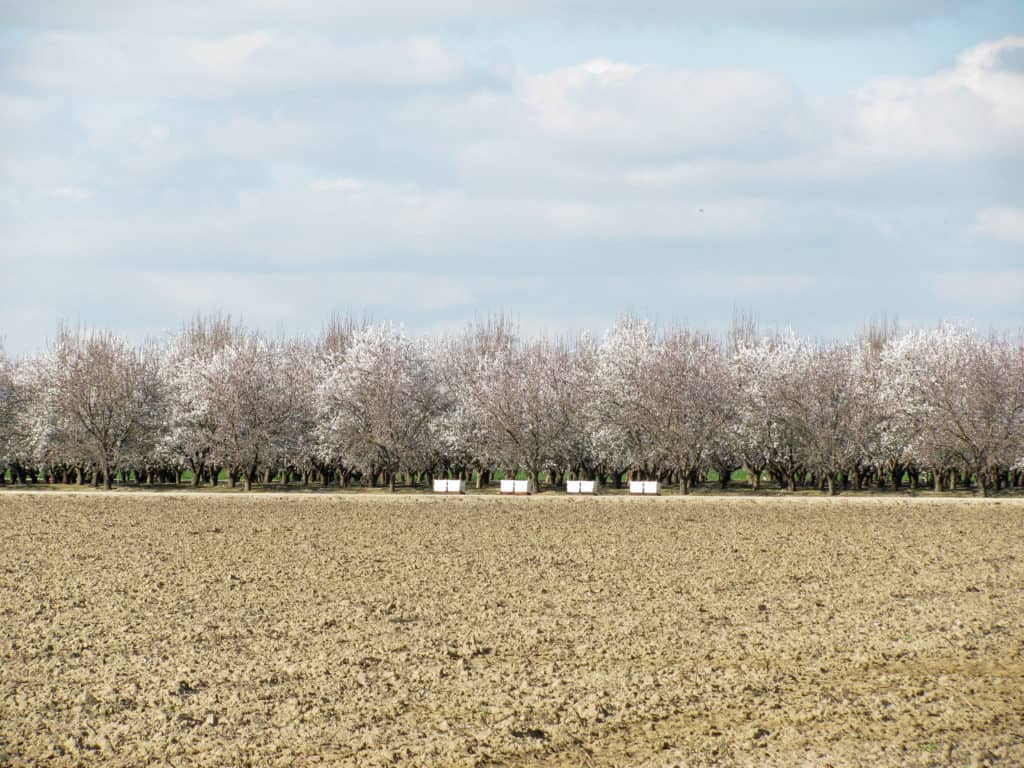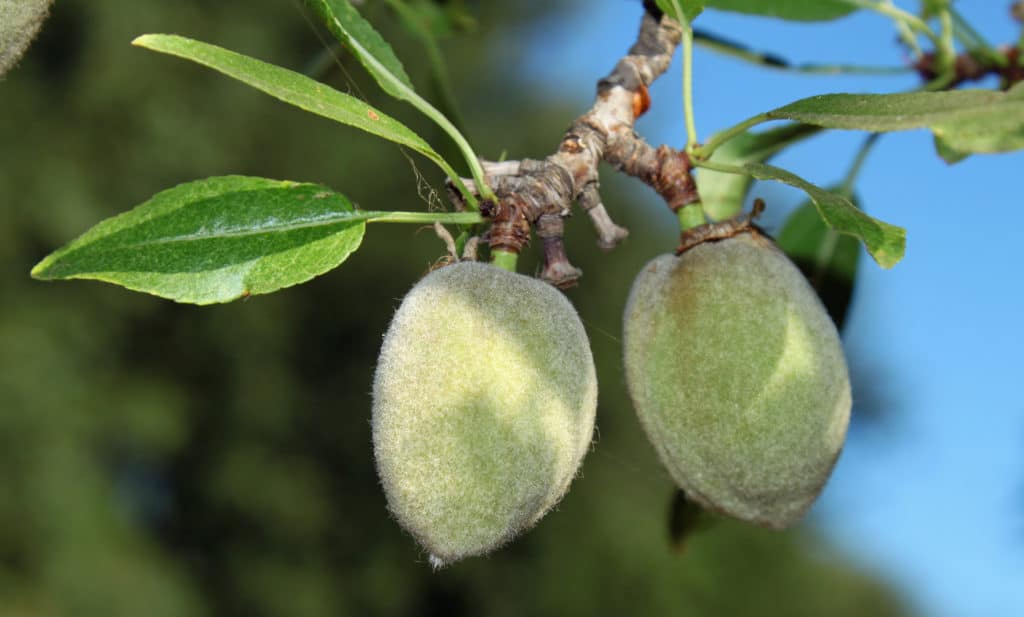
To get almonds you need pollinators. Above is an image of a handful of honey bee colonies out in an orchard during the almond bloom. This pollination starts at the end of January and throughout February depending on weather. There are close to a million honey bee colonies in California during the time of this bloom. This makes California’s Almond bloom the largest annual managed pollination event in the world. Below are images of almonds on the trees several months after pollination.


During this time of year almonds are becoming mature and harvesters are preparing to start shaking the trees. Once the almonds reach a point where 100% of the hulls are split (the hull is the outer shell that splits as the almond ripens exposing the shell) the nuts can be shaken from the trees. The almonds dry on the tree in 2-3 weeks, are shaken from the tree and will dry on the ground from 7 to 10 days. Once the hulls are dry enough, they will be swept into the middle of orchard rows to be picked up by a pickup machine. Once the pickup machine gathers the nuts they will be loaded onto trailers and delivered to a huller. Once the huller receives the almonds, they will remove the hulls. The inshells are then delivered to a processor. Here the nuts will be graded for distribution. I hope to see this process in the upcoming weeks in the Sacramento Valley.

In the image above you can see the hulling company. The hulling equipment is in the building on the right and the open building to the left is where the hulls are stored. Once the almonds are hulled the hull is conveyed into this building and stored into a pile. They then sell these hulls mainly to dairy farms for cattle feed. Once the inshells are separated, they will be taken to a receiving station or processor. There is a picture of a receiving station below. From here the almonds will be trucked to be processed (bagged, labeled) and then will be distributed once processing is complete. I would like to thank Joe Connell of the Butte County Extension for his help with this blog.
